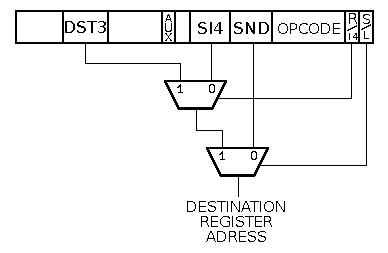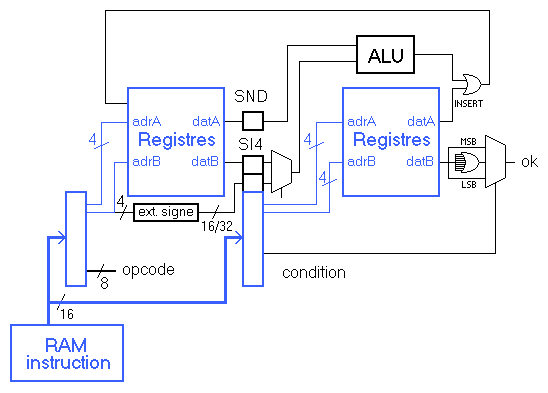and friends : Pierre Pronchery (DEFORA),
Laura (YGLLO), Troy (q3u.be) ...
And you ?
- A small embedded microprocessor
(hence the name : "Yet Another Small Embedded Processor" )
Don't forget the "the" - A website : http://yasep.org
- A CPU design framework
- A software development environment
- mid-2002 : The YASEP started as the "VSP" (Very Simple Processor), a side project. Happy birthday !
- dec. 2002 : 19C3@Berlin : last major F-CPU presentation.
- 2003-2007 : F-CPU stalls, VSP slowly becomes the YASEP and turns into my main hobby
- YASEP2009 : things get more serious and more organised
- YASEP2011 : reboot of the website around YGWM
- YASEP2013 : Starting next week
- Because I need it
- Because it must be better if I do it myself ;-)
- Because it's instructive and fun !
- Because it's possible
- Because it addresses many shortcomings of the F-CPU project
- Because it can also be useful to others
- Because new computing paradigms are necessary
- Because soon it will be too late !
« There can be no Free Software without Free Hardware »
In 2012, can you buy any new computer, install F/LOSS on it and/or keep it safe and under total control ?
=> MS owns your computer
Hackers and governments will 0wn your PC too, even when it's "off".
MIPS : 82 "essential" patents
(plus 498 sold to Allied Security Trust, "non practicing entity")
Intel, IBM, SUN/Oracle...
ARM : http://whitequark.org/blog/2012/09/25/why-raspberry-pi-is-unsuitable-for-education/
Smartphone : "There are over 250,000 patents and 5 million claims at play inside your pocket."
Can a microprocessor be successful and not encumbered by patents ? SPARC : LEON & OpenSPARC
- Quick & dirty development.
Nobody is looking at the code anyway. Come on. - New, "toy" architecture : the actual architecture does not matter anymore (in the world of SoC, I/Os prevail and SW is recompiled)
- Emphasis on usefulness, ease and simplicity
- Performance is pointless if it does not work
- Not tied to the GNU Compiler Collection (new paradigms)
- Slow maturation process, no rush, create a clean base
"don't hesitate to break often and rebuild better" - Holistic approach (software AND hardware)
- FUN
so it's « quite coherent »
JavaScript tools integrated in a window manager
As of 2012/12 :
What's expected :
(end of "submarine mode": presentations and workshops)
And a working tasks tracker...
 DeforaOS's assembler supports:
DeforaOS's assembler supports:
Microkernel based on BSD?
The YASEP's programming model :
- "Compacted" RISC (inspired by CDC6600)
- Simple and orthogonal instructions
Most opcodes can use all the operand combinations - All the opcodes can be predicated
- 16 registers
- No JMP/branch instruction (use the PC register instead)
- No load/store : Register-mapped memory

(The destination register is always written last.)
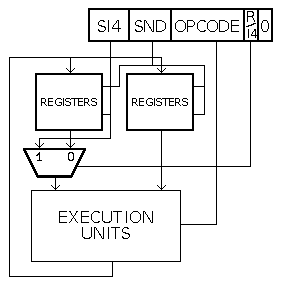 ADD R2,R1
ADD R2,R1R1 <= R1 + R2
| 15 | 14 | 13 | 12 | 11 | 10 | 9 | 8 | 7 | 6 | 5 | 4 | 3 | 2 | 1 | 0 |
| src/Imm4 | src/dest | opcode | Reg | court | |||||||||||
| R2 | R1 | ADD | 0 | 0 | |||||||||||
ADD [-8..7],R1
R1 <= R1 + imm4
| 15 | 14 | 13 | 12 | 11 | 10 | 9 | 8 | 7 | 6 | 5 | 4 | 3 | 2 | 1 | 0 |
| src/Imm4 | src/dest | opcode | Imm4 | court | |||||||||||
| 2 | R1 | ADD | 1 | 0 | |||||||||||
Legend:
ADD R2,[-32768..32767],R1
R1 <= R2 + Imm16
| 31 | 30 | 29 | 28 | 27 | 26 | 25 | 24 | 23 | 22 | 21 | 20 | 19 | 18 | 17 | 16 | 15 | 14 | 13 | 12 | 11 | 10 | 9 | 8 | 7 | 6 | 5 | 4 | 3 | 2 | 1 | 0 |
| Imm16 | src/Imm4 | src/dest | opcode | Imm16 | long | ||||||||||||||||||||||||||
| 12345 | R2 | R1 | ADD | 0 | 1 | ||||||||||||||||||||||||||
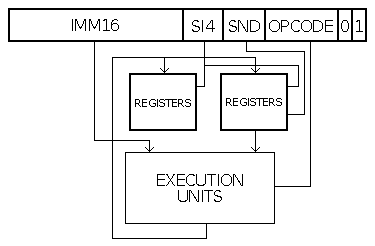
| 31 | 30 | 29 | 28 | 27 | 26 | 25 | 24 | 23 | 22 | 21 | 20 | 19 | 18 | 17 | 16 | 15 | 14 | 13 | 12 | 11 | 10 | 9 | 8 | 7 | 6 | 5 | 4 | 3 | 2 | 1 | 0 |
| dest3 | Reg | src/Imm4 | src/dest | opcode | Ext | long | |||||||||||||||||||||||||
| R3 | 0 | R2 | R1 | ADD | 1 | 1 | |||||||||||||||||||||||||
| 31 | 30 | 29 | 28 | 27 | 26 | 25 | 24 | 23 | 22 | 21 | 20 | 19 | 18 | 17 | 16 | 15 | 14 | 13 | 12 | 11 | 10 | 9 | 8 | 7 | 6 | 5 | 4 | 3 | 2 | 1 | 0 |
| dest3 | Reg | src/Imm4 | src/dest | opcode | Ext | long | |||||||||||||||||||||||||
| R3 | 1 | 5 | R1 | ADD | 1 | 1 | |||||||||||||||||||||||||

Ifi R4 is even the R3 <= R1 + R2
| 31 | 30 | 29 | 28 | 27 | 26 | 25 | 24 | 23 | 22 | 21 | 20 | 19 | 18 | 17 | 16 | 15 | 14 | 13 | 12 | 11 | 10 | 9 | 8 | 7 | 6 | 5 | 4 | 3 | 2 | 1 | 0 |
| src cond | dest3 | cond | Reg | src/Imm4 | src/dest | opcode | Ext | long | |||||||||||||||||||||||
| R4 | R3 | LSB0 | 0 | R2 | R1 | ADD | 1 | 1 | |||||||||||||||||||||||

| NZ (register is Not Zero) | Z (register is Zero) |
| Bit set R1 | bit clear R1 |
| LSB1 (odd) | LSB0 (even) |
| MSB1 (negative) | MSB0 (positive) |
| Always | Never |
| Carry | NoCarry |
| Zero | Not zero |
ADD R1+ R2,R3
R3 <= R1 + R2, R1 <= R1 + 1
| 31 | 30 | 29 | 28 | 27 | 26 | 25 | 24 | 23 | 22 | 21 | 20 | 19 | 18 | 17 | 16 | 15 | 14 | 13 | 12 | 11 | 10 | 9 | 8 | 7 | 6 | 5 | 4 | 3 | 2 | 1 | 0 |
| dest3 | update | Reg | u | src/Imm4 | src/dest | opcode | Ext | long | |||||||||||||||||||||||
| R3 | 0 | R2 | R1 | ADD | 1 | 1 | |||||||||||||||||||||||||
| 00 | no update |
| 01 | post-increment |
| 10 | pre-decrement |
| 11 | post-increment |
4 bits are available to
modify src/dest and/or dest3
To be defined in 2013
The memory is accessed in 2 phases through 5 register pairs: A1-D1, A2-D2, A3-D3, A4-D4, A5-D5 (« Point and shoot »)
Better performance, scalability and security than Load/store CPUs
Read :mov 1234h A1 ; point to address 1234h mov D1 R1 ; copy the memory contents into R1
Write :
mov 1234h A1 ; point to address 1234h mov R1 D1 ; write R1 to mémoire
Out-of-word half-word accesses set the carry flag.
The microYASEP :
- Simple subset of the YASEP,
a first implementation with less instructions, dumb memory - Useful for microcontroller tasks
when you don't want to use a M0, PIC or AVR... - Synthesised to 20 MIPS with little tuning on Actel
when flexibility (not performance) matters - Targets cheap FPGAs
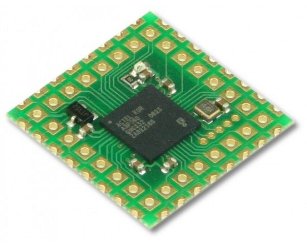 http://www.mirifica.it/store/68-trioflex-st32pa3-ap8.html
http://www.mirifica.it/store/68-trioflex-st32pa3-ap8.html
A3P060 is the cheapest and smallest possible target (4 SRAM blocks = 2KB)
 http://www.acmesystems.it/COLIBRI250
http://www.acmesystems.it/COLIBRI250A3P250 in BGA256 brings 32*256K=1MB of external SRAM, enough for a nice YASEP32
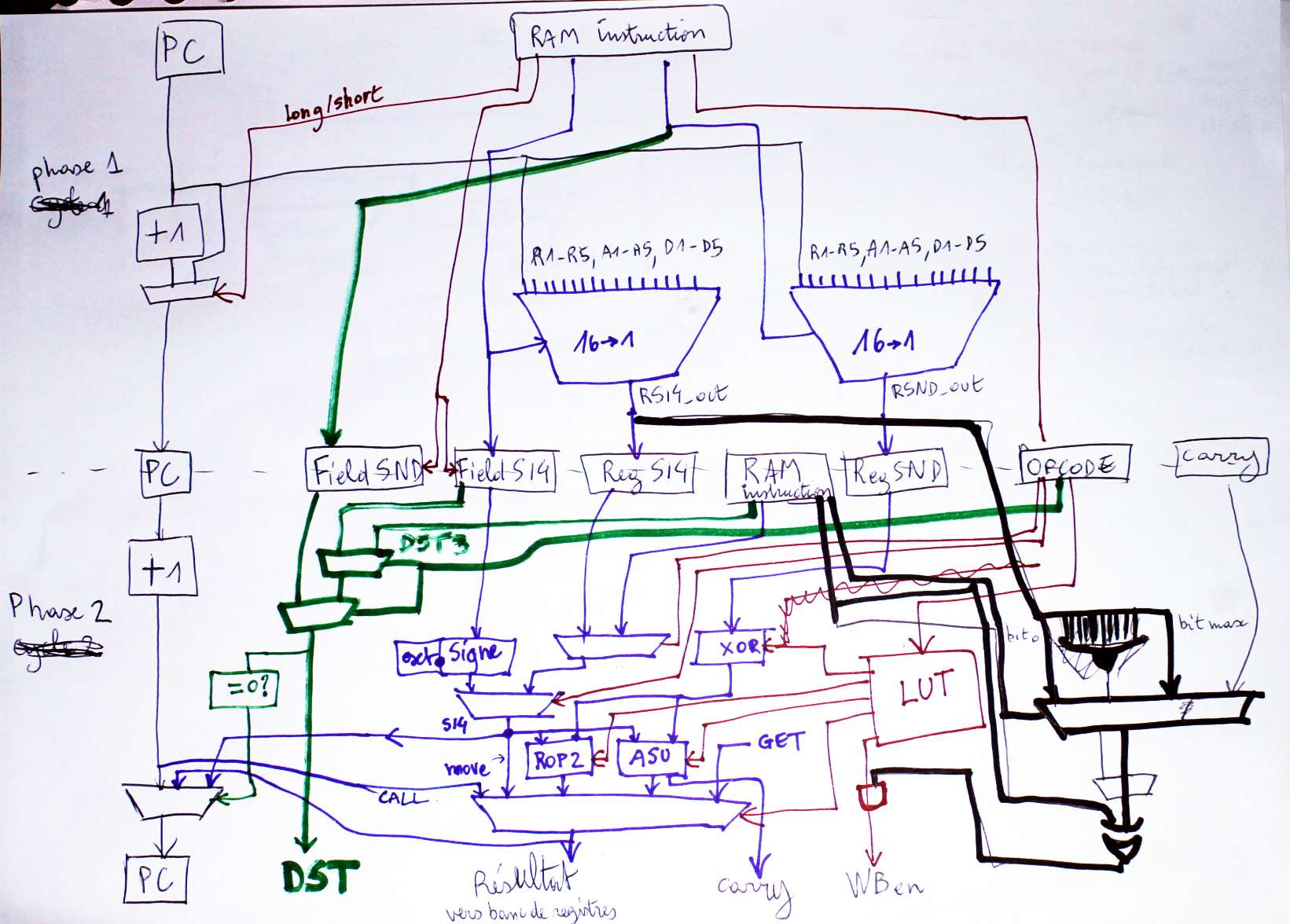
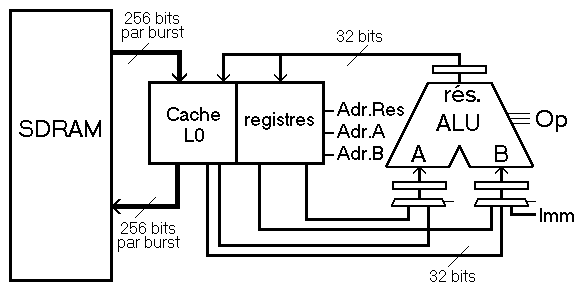
=> "no load/store" architecture.
| #0: | PC | 1 PC |
| #1: | R1 | 5 normal registers |
| #2: | R2 | |
| #3: | R3 | |
| #4: | R4 | |
| #5: | R5 | |
| #6: | D5 |
5 data registers: directlty access the buffers
5 address registers: |
| #7: | A5 | |
| #8: | D4 | |
| #9: | A4 | |
| #10: | D3 | |
| #11: | A3 | |
| #12: | D2 | |
| #13: | A2 | |
| #14: | D1 | |
| #15: | A1 |
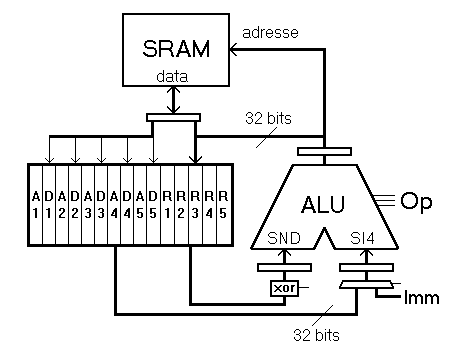
no buffer or aliasing detection,
much smaller to fit in cheap FPGAs
